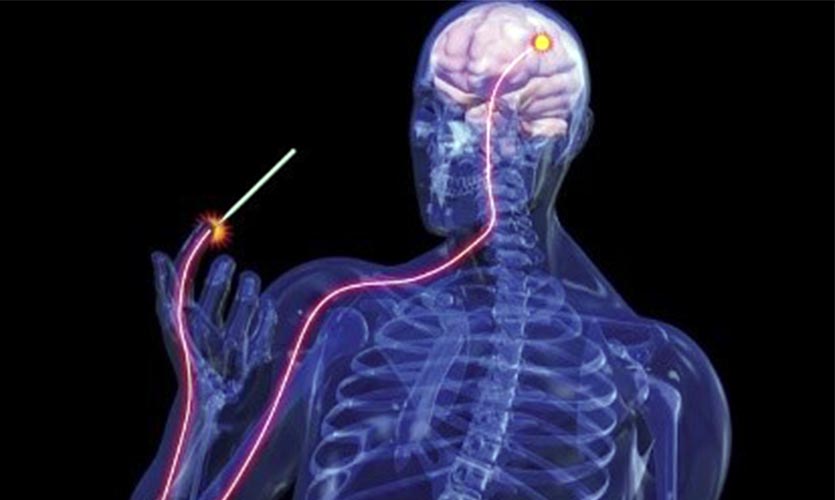Pain Signalling in Humans: A Superfast Highway to the Brain Discovered

Pain signals can travel as fast as touch signals, according to a new study from researchers at Liverpool John Moores University’s SomAffect Group, Linköping University (Sweden), and the National Institutes of Health (USA).
The discovery of a rapid pain-signalling system challenges the textbook view that pain is signalled exclusively by slower conducting nerves that have only a thin layer of myelin or none. The study has been published in the scientific journal Science Advances.
Using a technique to record nerve signals from single nerve cells in awake human participants (microneurography), we now know that humans, in line with most other mammals, are equipped with ultrafast ‘pain’ neurons (nociceptors) that signal as fast as touch nerves that have a thick layer of myelin. Further, testing in patient groups with rare neurological deficits corroborated the role of this system in pain perception. The discovery will require a rethink of current models of chronic pain.
The study is an international collaboration funded by, among others, the Pain Relief Foundation, Swedish Research Council, ALF Region Östergötland, and the Intramural Research Program of the NIH (NCCIH).
The article: “An ultra-fast system for signalling mechanical pain in human skin”, Saad S. Nagi, Andrew G. Marshall, Adarsh Makdani, Ewa Jarocka, Jaquette Liljencrantz, Mikael Ridderström, Sumaiya Shaikh, Francis O´Neill, Dimah Saade, Sandra Donkervoort, A. Reghan Foley, January Minde, Mats Trulsson, Jonathan Cole, Carsten G. Bönnemann, Alexander T. Chesler, M. Catherine Bushnell, Francis McGlone, and Håkan Olausson, Science Advances, published online 03 July 2019.


